Tibetan Buddhism Prostration - How and Why to Make Prostrations
- Eric
- Last Updated : 05/24/2024
If you travel to Tibet, you will see many devout pilgrims prostrating on the road and move step by step to their destination. You may wonder what’s prostration? It is one of the oldest and most sincere ways for Tibetan Buddhists to pray to the Buddha, also being called kowtow. Thus, you’ll find many Tibetan Buddhists prostrating themselves, especially during pilgrimages or immersion trips to sacred shrines. Kowtow, stand up and continue with the next round, move one step and bend down, kowtow again, and so on. During the prostration, Tibetan Buddhists grovel on the ground, to show respect with their body; meanwhile, they would chant the mantra constantly, to show respect in speech; and they should hold the thought of Buddha, to show respect in mind. The three means have been unified well for prostration. When people make prostration, they put hands together to express understanding of the Buddha's leading and teachings. Touching the forehead, mouth/throat, and chest indicates that the body, speech, and mind are in harmony with the Buddha. In Tibet, faithful Buddhists should make 100,000 prostrations in their lifetime.
Prostration in Tibetan Buddhism is a practice of showing reverence to the presence of the Triple Gem. The Triple Gem is a term used to refer to Buddha, Dharma, and Sangha. The Buddha means the fully enlightened one; The Dharma means the teachings expounded by the Buddha; The Sangha means the monastic order of Buddhism that practice Dharmas.
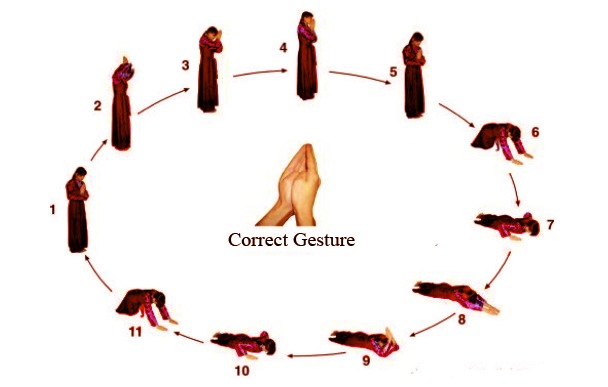
How to Make Prostrations?
There are three basic types of prostration in Tibetan Buddhism, namely: the Gyangchag, Kumchag, and Symbolic Prostrations.
Gyanchg Prostration
The most common form of prostration is Gyanchag. Gyanchag is a full-body prostration, wherein the devotee drops his body forward, toward the direction of the monastery or shrine. Then, he completely stretches his body on the floor. Afterward, he brings his cupped palms to the top of his head, his mouth/throat, and his heart. While doing this prostration, he also recites the refuge vow. This refuge vow is a chant that is commonly practiced in all branches of Buddhism. It is an expression of faith towards the Triple Gem.
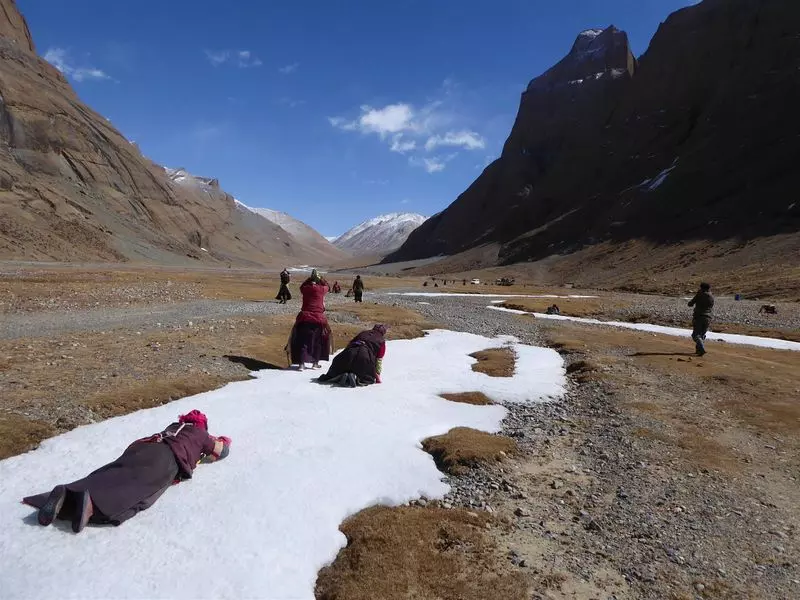
Kumchag Prostration
The second type of prostration is Kumchag. When you do Kumchag, you only prostrate from your knees. It is not a complete prostration, but a partial prostration. And thus, it is easier to do than the Gyanchag. Kumchag came from the word "Kum" a Tibetan word that means contracting your body. It is different from reaching out.
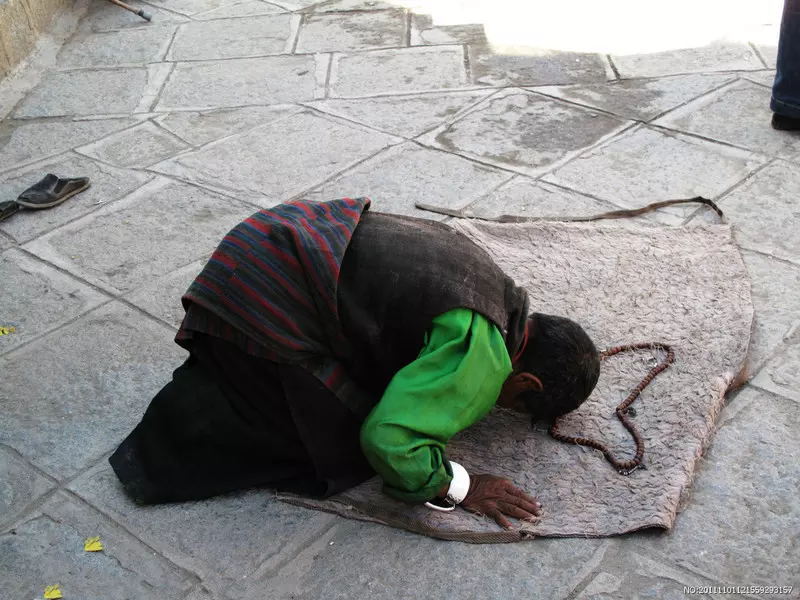
Symbolic Prostration
Symbolic prostration entails hand motions. You can do it while standing or seated. You usually make the symbolic prostration if there's not much elbow room for a full-body prostration. Hence, it is encouraged as a practical alternative to full-body prostration.
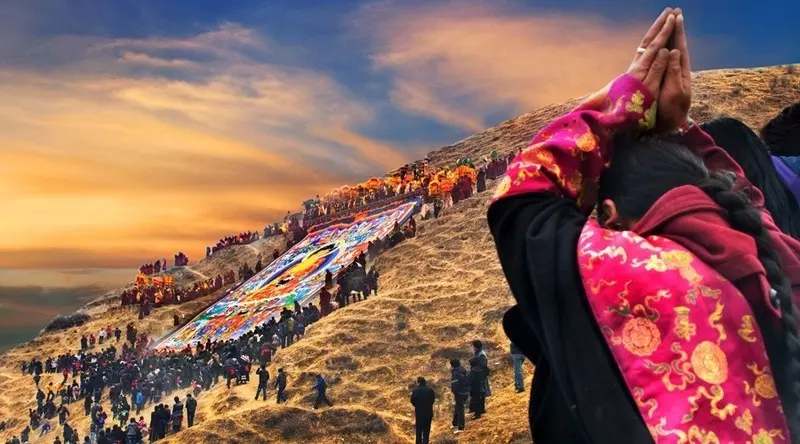
Why Should You Engage in Prostration?
The practice of prostration is deeply rooted in Buddhist teachings. According to Buddhist teaching, prostration manifests the spiritual growth or faith of a person. Buddhism says that the physical world is Maya (Illusion). Buddhist devotees, therefore, should strive to strip themselves of this illusion through the practice of meditation and self-denial to achieve enlightenment. Yet, one can’t achieve enlightenment if one doesn’t rid oneself of past karma. The practice of prostration, therefore, is essential to the purification of the mind and freeing it from bad karma as a result of negative doings or thoughts.
The Refuge Vow
The refuge vow, as mentioned above, is a chant that is commonly practiced in all branches of Buddhism. It is an expression of faith towards the Triple Gem and is recited when you do the prostration. When you recite the refuge vow, you usually deal with the most common fears that hinder you from attaining enlightenment. These fears include the fear of surrendering; fear of awakening; and fear of your mind. Buddhism also teaches the four noble truths. The four noble truths are the following:
- Dukkha (The truth of suffering)
- Samudaya (the cause of the suffering)
- Nirhodha (the end of suffering)
- Mangga (the path that liberates us from suffering)
Prostration is deeply intertwined with these noble truths. It is aimed at achieving the final enlightenment of the mind. It enables you to transition from one stage of understanding to another stage of understanding until you achieve Nirvana or Moksha. Moksha, of course, is the freedom or liberation from samsara (cycle of birth and rebirth).
Prostration as a Preparation for Meditation!
Besides showing reverence, you can also use prostration to prepare yourself for meditation. Besides performing them at monasteries or nunneries, you can do prostration at home in front of a personal shrine. You can do it after waking up, in the early morning to start your day and prepare your body for more strenuous forms of meditation.
Prostration is also associated with the concept of karma. Karma is a fundamental concept in Buddhism that says most of your actions are driven by personal intentions. Hence, your actions result in either good or bad consequences (good or bad karma). Together with your good deeds and prostration (your reverence of God), you slowly free yourself from bad karma.
Karma is a spiritual concept about the cause and effect of your intent and actions. It says that your intent and actions can determine your future incarnation.
Cause and Effect (Karma) and Prostration
The idea of karma is based on the philosophical idea of cause and effect. This means your actions will always produce effects. The effects can either be bad or good for your spiritual incarnation. More often, a devotee is caught in a karmic cycle of birth and rebirth due to the cause and effect of his actions without attaining Moksha.
To achieve Moksha or enlightenment, you need to purify your intentions and perform good actions. One such manifestation of good actions is the act of prostration. Prostration is a good deed that manifests reverence to the Triple Gem. Hence, it is indicative of the purification process of one's spirit. Although an outward action, if prostration is done with pure intention, it is a powerful way to rid oneself of bad karma.
Places Where Tibetan Buddhists Engage in Prostration!
Tibetan Buddhists usually do this symbolic prostration at home, monasteries, nunneries, and most especially at sacred sites and shrines. If you visit Tibet, you’ll get a firsthand experience of how Tibetans devoutly prostrate themselves.
There are many places in Tibet where devotees can find solace and prostrate reverently. Jokhang Temple, for example, is considered as the heart of Tibetan Buddhism. As such, it is the most important temple in Tibet. There, you will find lots of pilgrims who devoutly engage in prostration. Besides the Jokhang Temple, there are other sacred sites where Tibetans engage in prostration.
Other notable sites include that of Mount Kailash, the most sacred mountain in the world and the center of four different religions. There is also Barkhor Street that includes the area surrounding Jokhang Temple. Moreover, there is the Potala Palace, and many other monasteries and sacred lakes around Tibet.
Email response within 0.5~24 hours.


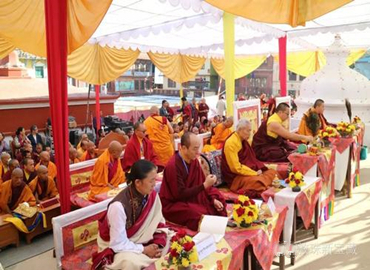
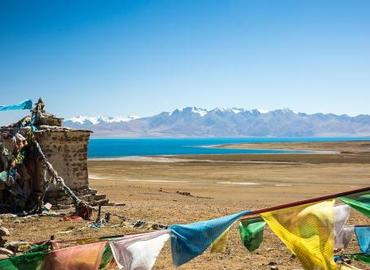
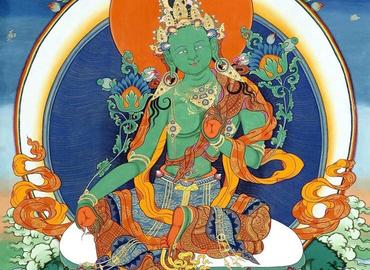


Typically Asked Questions from Our Clients
Asked by Sai ***
Hi,
I wanted to do Mount Kailash "Sastanga Parikrama" which is full Prostration. It seems it will take 20-25 days (for non-Tibet people). Last year I did a normal trip to Mount Kailash. This year I wanted to do full prostration. Any suggestions how I get visa and support during the Prostration? Thank you for your help and suggestions.
Dear Sai****,
We can arrange the tour for you. I'll answer your questions.
1. We can help you apply for the Tibet Permit with your China visa.
2. The Tibet Permit is valid for 30 days. If you prefer 25 days for prostration, it's not suitable to join a group tour as the group tour will take 7 days to get to Darchen. So, we can only arrange a private tour for you. We suggest you stay in Lhasa for at least two nights to adapt to the high altitude. On Day 3, you can take a flight to Nagri. After prostration, you can take a flight back to Lhasa and then leave Lhasa. You may have about 25 days for prostration.
3. During the prostration, we'll arrange a vehicle, a tour guide, tents, and sleeping bags and help you rent yaks and porters. The tour guide can cook the meals for you. Frankly speaking, the cost of Mt. Kailash prostration is very high.
Asked by Tasn***
I am a mature female and would like to visit Nepal to see Buddhist monks prostrating and understand more od cukture and religion. Do you have tours I can join
Dear Tasn****,
We can arrange a private tour of the Buddhist sites for you. Here's the recommended itinerary. We also can add 1 extra day in Lumbini so that you have more time to interview with monks.
Detailed Itinerary
Day 01: ARRIVAL KATHMANDU
On arrival meet and assist at the airport and transfer to hotel.
Day 02: KATHMANDU
After breakfast visit Kathmandu city, Swayambhunath & museum. Afternoon, excursion to Patan & Tibetan handicraft center.
Day 03: KATHMANDU
After breakfast visit Boudhnath, Pashupatinath & Bhaktapur. Afternoon, drive to Dhulikhel for overnight stay.
Day 04: KATHMANDU-BHAIRAWA (FLIGHT), BHAIRAWA-LUMBINI
After breakfast, transfer to airport to board flight for Bhaiwara. Arrive Bhairawa and transfer to Lumbini. In the afternoon, visit Lumbini.
Day 05: LUMBINI-BHAIRAWA (FLIGHT)-KATHMANDU
Day 06: FINAL DEPARTURE